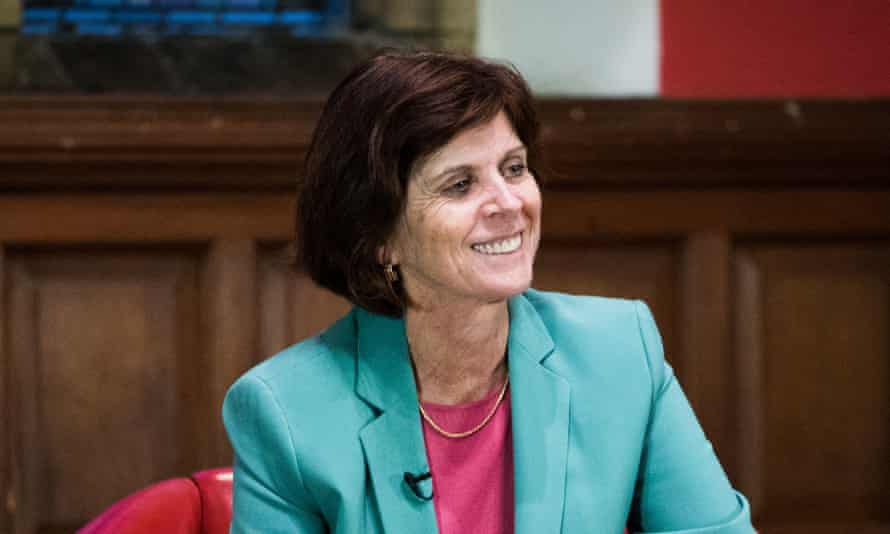The University of Oxford says it has almost doubled the proportion of students from disadvantaged backgrounds starting their studies, as part of a five-year turnaround resulting in its most diverse ever intake.
The proportion of new students from socio-economically disadvantaged areas rose from 8.2% to 15.9% over the last five years. For the academic year 2020-21, the university also recruited record numbers of state school-educated students (68.6% of the total, a rise of 18% over five years), black, Asian and minority ethnic students (23.6%, a 50% increase) and students with disabilities (10.4%, a 44% rise), according to its annual admissions report.
“We have made a concerted effort to diversify the socio-economic backgrounds of our student body. There has been a real commitment across the university,” said Oxford’s vice-chancellor, Louise Richardson.
“Those who live and work in the university believe it to be a meritocratic institution, and that the public image is not consistent with day-to-day life. I’m enormously proud of the progress we’ve made.”
A university spokesperson said early figures for offers made for the 2021 intake suggest that progress will be maintained, with similar numbers of state school students receiving offers and an increase among those from disadvantaged backgrounds.
The university has continued its outreach activities online throughout the pandemic, and sent out laptops and wifi dongles to ensure that all students would be able to participate in online interviews.
Five years ago, state school applicants to Oxford received 56% of undergraduate offers, while 43% went to those educated at independent schools, generating widespread criticism from MPs and the media that the university was not doing enough to attract a wider range of students.
The university responded by introducing a target to boost the proportion of its undergraduate intake coming from underrepresented backgrounds from 15% to 25% by 2023.

The figure currently stands at 18.8% for 2020. Richardson said targeted initiatives were helping the university to be “firmly on track” to meet this goal, especially those that demystify the university.
Oxford has doubled the size of its Uniq summer school, and launched an Opportunity Oxford course that teaches study skills to help students from lower-performing schools catch up, and also a new scholarship targeted at black British undergraduates, funded by Arlan Hamilton, the US tech entrepreneur, and black postgraduates.
Kane Moylett, a first-year law student from Scunthorpe, said Opportunity Oxford had helped him make the transition from a school where he had only been expected to achieve minimal grades to a highly pressurised environment. “It was quite a big jump,” he said.
But mostly he has benefited from the social connections. “Coming to a university like Oxford you’re apprehensive that everyone’s going to be very posh and from private school and you’re not going to find anyone like you, but I found so many friends on the programme.”
Despite the progress, Richardson acknowledged there remain disparities among geographical regions and ethnic groups. The report showed that the university recruits a greater proportion of students from London than the region’s share of AAA+ students (27.2% compared with 19%), but the figure is lower for Yorkshire and Humber (4.9% compared with 6.5%). Equally, Asian students made up 9.6% of UK students admitted, while students of black African or Caribbean heritage comprised 3.7%.
Samina Khan, director of undergraduate admissions, said the university is “increasing our focus on reaching regional cold-spots” by working with schools across the country.
One additional barrier for BAME students and those who are state school-educated or from disadvantaged backgrounds is that they are more likely to apply for the most competitive courses than their more privileged peers, the report noted. Richardson said this is due to a lack of understanding of the system, which the university is seeking to remedy by providing clear information on course popularity.
In 2020, the university also admitted 300 more students than usual following higher than expected results among A-level students; however, Richardson said Oxford would continue to keep tight number controls in place, unlike many other prestigious universities, to maintain its highly personalised model of education.
“That means it becomes more competitive to get into Oxford – every year more and more students are applying but there’s no growth in places, so we’re turning down more highly qualified students we would love to take,” she said.
Stay connected with us on social media platform for instant update click here to join our Twitter, & Facebook
We are now on Telegram. Click here to join our channel (@TechiUpdate) and stay updated with the latest Technology headlines.
For all the latest Education News Click Here
For the latest news and updates, follow us on Google News.
